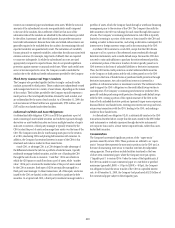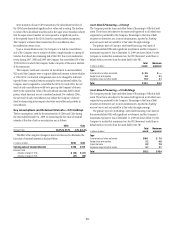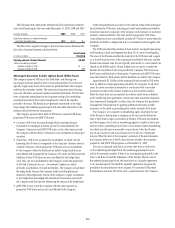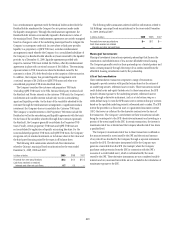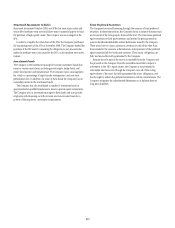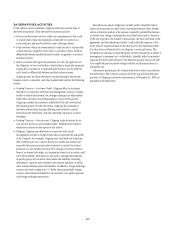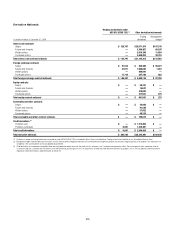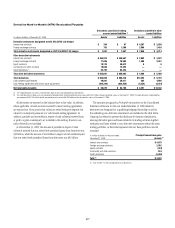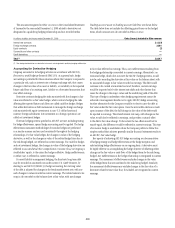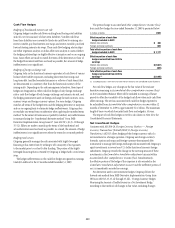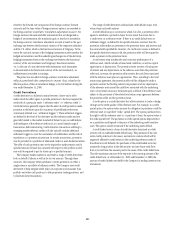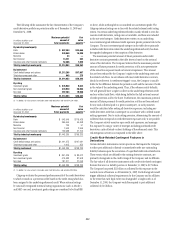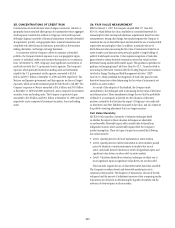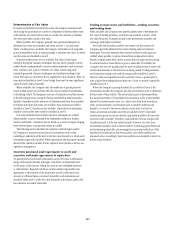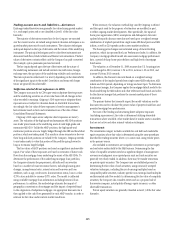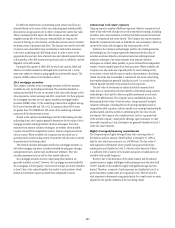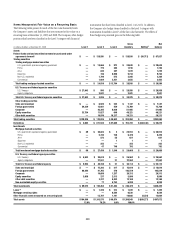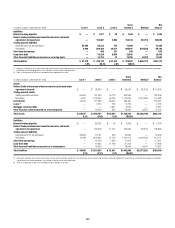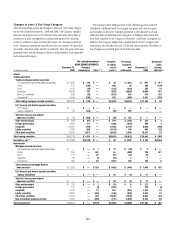Citibank 2009 Annual Report Download - page 230
Download and view the complete annual report
Please find page 230 of the 2009 Citibank annual report below. You can navigate through the pages in the report by either clicking on the pages listed below, or by using the keyword search tool below to find specific information within the annual report.
220
Cash Flow Hedges
Hedging of benchmark interest rate risk
Citigroup hedges variable cash flows resulting from floating-rate liabilities
and roll-over (re-issuance) of short-term liabilities. Variable cash flows
from those liabilities are converted to fixed-rate cash flows by entering into
receive-variable, pay-fixed interest-rate swaps and receive-variable, pay-fixed
forward-starting interest-rate swaps. These cash-flow hedging relationships
use either regression analysis or dollar-offset ratio analysis to assess whether
the hedging relationships are highly effective at inception and on an ongoing
basis. Since efforts are made to match the terms of the derivatives to those of
the hedged forecasted cash flows as closely as possible, the amount of hedge
ineffectiveness is not significant.
Hedging of foreign exchange risk
Citigroup locks in the functional currency equivalent of cash flows of various
balance sheet liability exposures, including short-term borrowings and
long-term debt (and the forecasted issuances or rollover of such items) that
are denominated in a currency other than the functional currency of the
issuing entity. Depending on the risk-management objectives, these types of
hedges are designated as either cash-flow hedges of only foreign exchange
risk or cash-flow hedges of both foreign-exchange and interest rate risk, and
the hedging instruments used are foreign-exchange forward contracts, cross-
currency swaps and foreign-currency options. For some hedges, Citigroup
matches all terms of the hedged item and the hedging derivative at inception
and on an ongoing basis to eliminate hedge ineffectiveness. Citigroup does
not exclude any terms from consideration when applying the matched terms
method. To the extent all terms are not perfectly matched, any ineffectiveness
is measured using the “hypothetical derivative method” from FASB
Derivative Implementation Group Issue G7 (now ASC 815-30-35-12 through
35-32). Efforts are made to match up the terms of the hypothetical and
actual derivatives used as closely as possible. As a result, the amount of hedge
ineffectiveness is not significant even when the terms do not match perfectly.
Hedging total return
Citigroup generally manages the risk associated with highly leveraged
financing it has entered into by seeking to sell a majority of its exposures
to the market prior to or shortly after funding. The portion of the highly
leveraged financing that is retained by Citigroup is hedged with a total return
swap.
The hedge ineffectiveness on the cash flow hedges recognized in earnings
totals $16 million for the 12 months ended December 31, 2009.
The pretax change in Accumulated other comprehensive income (loss)
from cash flow hedges for year ended December 31, 2009 is presented below:
In millions of dollars 2009
Effective portion of cash flow
hedges included in AOCI
Interest rate contracts $ 488
Foreign exchange contracts 689
Total effective portion of cash flow
hedges included in AOCI $ 1,177
Effective portion of cash flow
hedges reclassified from AOCI to
earnings
Interest rate contracts $(1,687)
Foreign exchange contracts (308)
Total effective portion of cash flow
hedges reclassified from AOCI to
earnings (1) $(1,995)
(1) Included primarily in Other revenue and Net interest revenue on the Consolidated Income Statement.
For cash flow hedges, any changes in the fair value of the end-user
derivative remaining in Accumulated other comprehensive income (loss)
on the Consolidated Balance Sheet will be included in earnings of future
periods to offset the variability of the hedged cash flows when such cash flows
affect earnings. The net loss associated with cash flow hedges expected to
be reclassified from Accumulated other comprehensive income within 12
months of December 31, 2009 is approximately $2.1 billion. The maximum
length of time over which forecasted cash flows are hedged is 10 years.
The impact of cash flow hedges on AOCI is also shown in Note 22 to the
Consolidated Financial Statements.
Net Investment Hedges
Consistent with ASC 830-20, Foreign Currency Matters — Foreign
Currency Transactions (formerly SFAS 52, Foreign Currency
Translation), ASC 815 allows hedging of the foreign-currency risk of a
net investment in a foreign operation. Citigroup uses foreign-currency
forwards, options and swaps and foreign-currency-denominated debt
instruments to manage the foreign-exchange risk associated with Citigroup’s
equity investments in several non-U.S. dollar functional currency foreign
subsidiaries. Citigroup records the change in the carrying amount of these
investments in the Cumulative translation adjustment account within
Accumulated other comprehensive income (loss). Simultaneously,
the effective portion of the hedge of this exposure is also recorded in the
Cumulative translation adjustment account and the ineffective portion, if
any, is immediately recorded in earnings.
For derivatives used in net investment hedges, Citigroup follows the
forward-rate method from FASB Derivative Implementation Group Issue
H8 (now ASC 815-35-35-16 through 35-26), “Foreign Currency Hedges:
Measuring the Amount of Ineffectiveness in a Net Investment Hedge.”
According to that method, all changes in fair value, including changes


